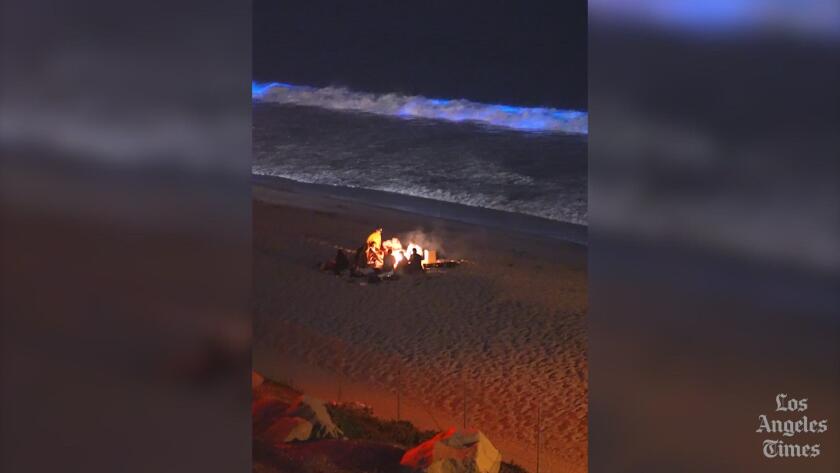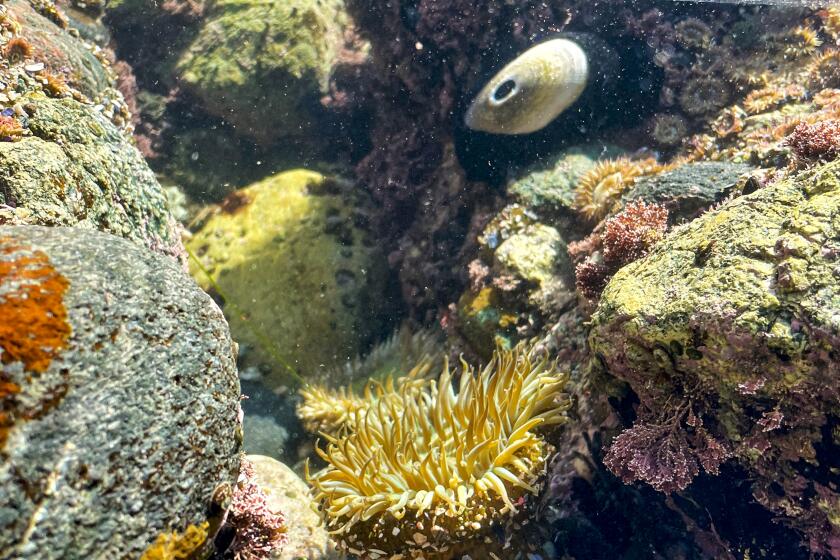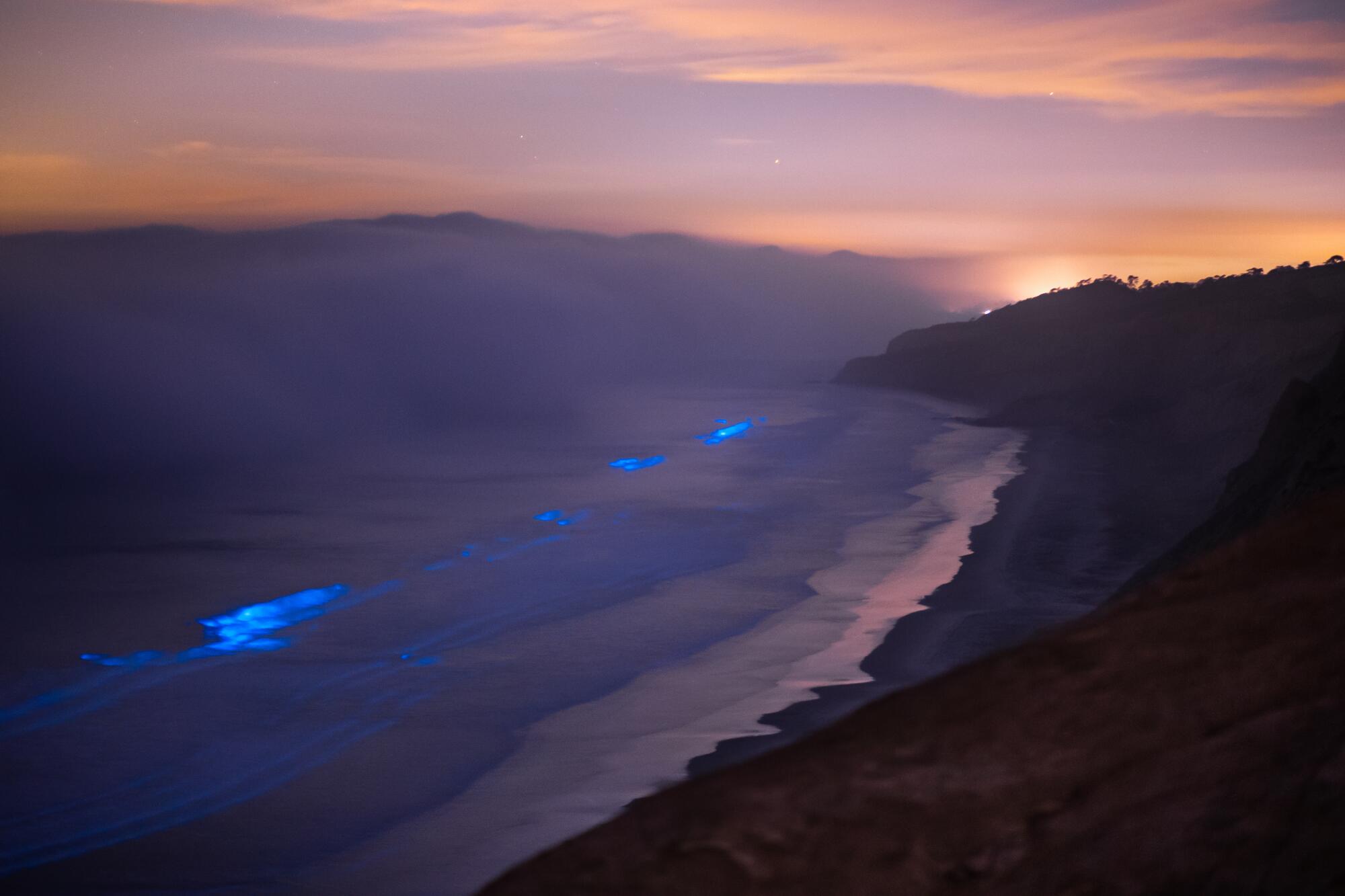
- Share via
Three hours into a chilly night on the water in April 2020, Patrick Coyne was ready to give up. Cruising out of Newport Beach and down to Dana Point, he and two fellow nature photographers had been sailing on a boat in the pitch dark, hoping to capture a rare moment: dolphins gliding like electric blue eels through bioluminescent plankton.
It had been a month since the COVID-19 pandemic began and Coyne was eager to shoot something transcendent that he could share with a struggling world — a rare and beautiful confluence of marine life seldom witnessed by human eyes. But the team was cold and tired, and after logging more than 60 miles round trip during what was considered a major bioluminescence event, no marine life had come to play by the boat. Just a few hundred feet from docking at Newport’s harbor, they decided to call it a night.
That’s when they saw it: the glow around their boat. And then, two dolphins popped up in front of the bow as if to say hello, their weaving shapes gleaming with bright blue light.
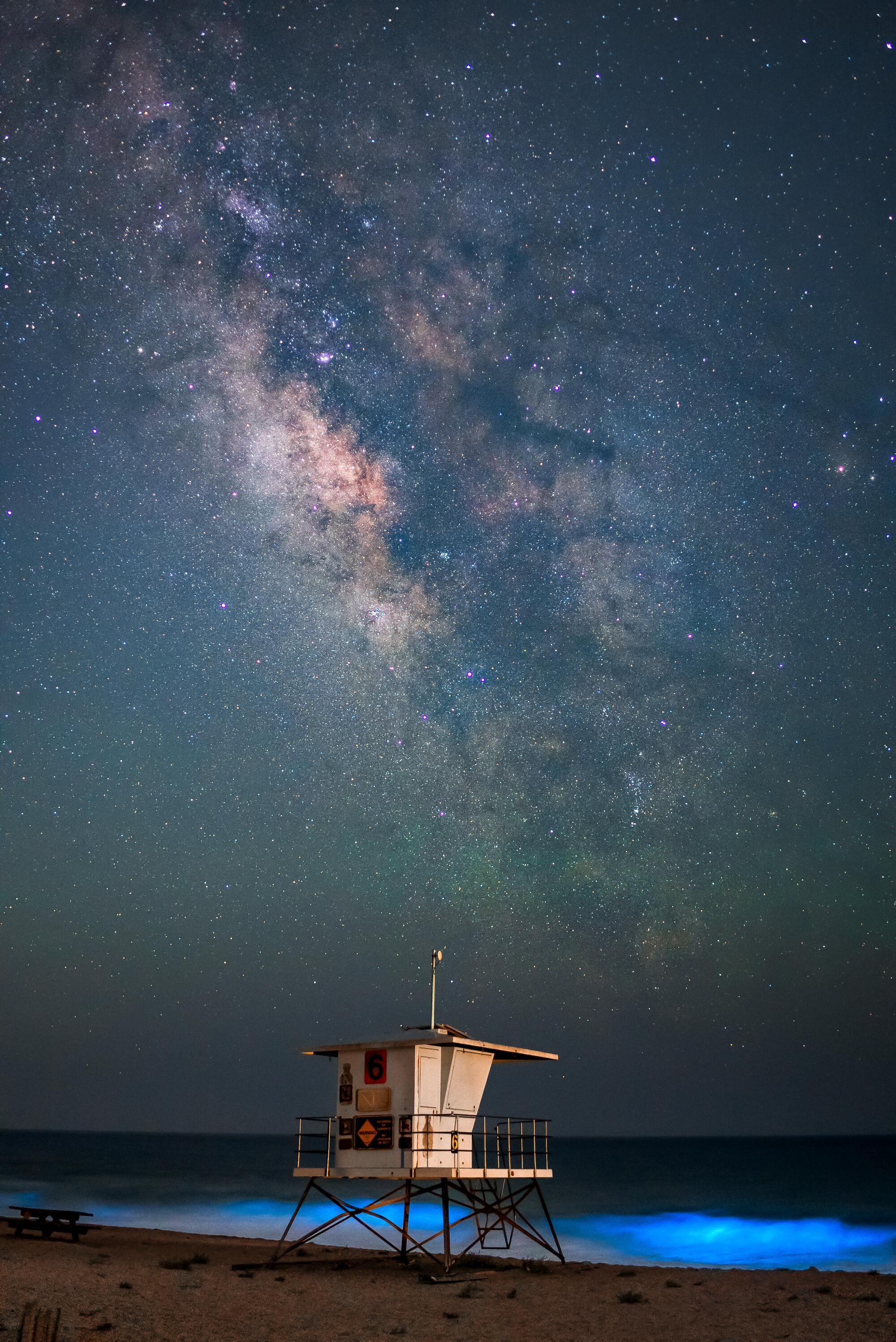
Coyne was so shocked he dropped his gear, but soon recovered to film the pair. Another two dolphins joined, and Coyne filmed silently, in awe as they lighted up the water on his screen.
“The second I stopped recording, we were screaming and cheering, and I remember having tears in my eyes,” Coyne said. “The world needs to see this — this is literally out of a fairy tale, a movie.”
That video went viral, inspiring the Los Angeles community of bioluminescence hunters to grow during the pandemic. Coyne says that strangers started contacting him over Instagram, requesting that he alert them each time he witnessed a glow.
In coastal regions, the primary source of bioluminescence is the natural phenomenon of agitated dinoflagellates called lingulodinium polyedra. When this type of phytoplankton collects, it’s often called “the red tide,” and as a collective occurrence, it can be as fickle as the dolphin pods, moving and shifting in any direction or failing to light up in the most ideal conditions.
Coyne started photographing bioluminescence in 2019, but began chasing it in 2020 after a giant red tide bloom exploded from Southern California to Baja California. Driving from his home in Torrance to the beach several times a week, he went live on Instagram each time he found it. His videos, like a surf lighting up as it breaks against the beach in Crystal Cove, are at once meditative and exhilarating. From the messages that flooded his Instagram inbox, he knew he was onto something. The bioluminescence provided an outdoor light show and a connection to nature that people craved.
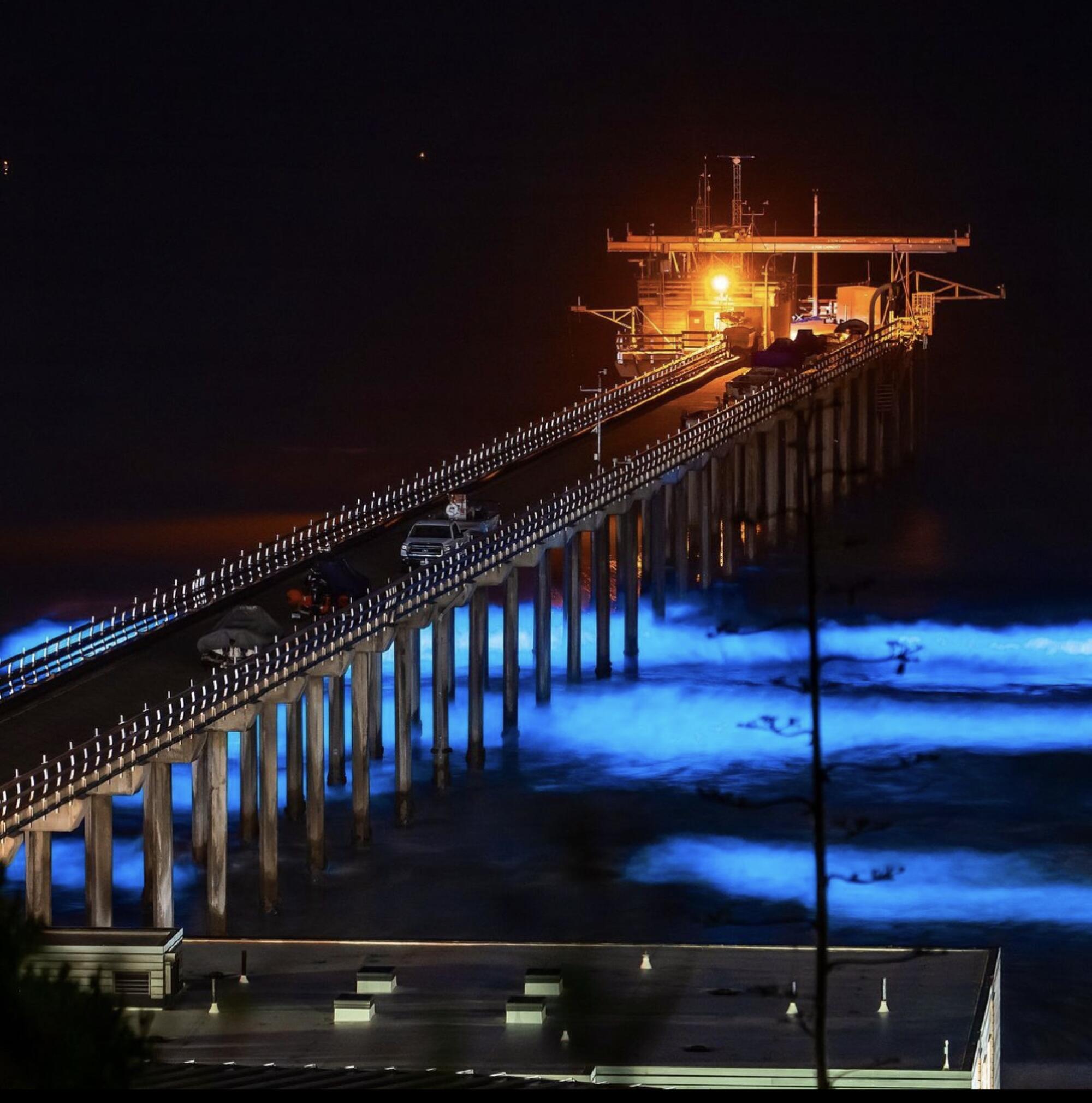
“When we think back to 2020, the time we were living in was really bad, and all of a sudden we had something really magical happen that allowed people to get out to the beaches,” Coyne said. “It was a hard time because of COVID, but it was also one of the best times of my life because I was capturing footage I had never captured before and meeting a community of people who got to see this for the first time. It really did change my life.”
Despite the frequent frustration of searching for bioluminescence and finding nothing, Coyne keeps going to the beach every week. He loves how ephemeral the natural phenomenon can be, like lightning on a stormy night.
“It takes a little effort to find bioluminescence, and that’s part of the lore and why people like it,” Coyne said. “You think it’s going to glow and then it doesn’t, so when you get to see it, it’s a reward.”
That’s why Coyne refuses to give bioluminescence tours, though he’s had his share of requests. Still, there’s a good chance of seeing it if you live here. Coyne explains that Southern California, with its unique and ample coastline and warm weather, is one of the best spots for spotting bioluminescence. “We’re so lucky to live in Southern California,” he said. “We have a really unique coastline that other places don’t have.”
- Share via
A group enjoys a bonfire alongside bioluminescence in San Clemente.
To join the bioluminescence chasers, head to Newport Beach, Crystal Cove and Crescent Bay Beach, Coyne said. San Diego’s beaches are also well-reputed for having warmer waters and prime conditions for the phytoplankton. But the most significant factors in your likelihood of seeing the glow may simply be your persistence in going out night after night, and your awareness of the presence of red tide.
“The world needs to see this — this is literally out of a fairy tale, a movie.”
— Patrick Coyne
Pay attention if you see photos and videos of surfers out in the waves, and the water looks reddish brown, or murky. Then, try hitting the beach two hours after sunset. A heavy rain followed by a warm, sunny day also bodes well for bioluminescence, Coyne said, because the nutrients from the rain and light of the sun aid the algae bloom. As for visibility, you may have your best luck during a new moon because there’s less light on the water. The next one is Nov. 23.
Of all the remarkable things about tide pools, No. 1 on the list has to be this: Each visit offers an opportunity to observe something new.
If you don’t have time to hit the beach every night, or drive 45 minutes down to it at 3 a.m. in the morning like Coyne, paying attention to social media is the next best way to chase the glow — or even just experience it virtually. Follow individual chasers, like Coyne (@patrickc_la), Mark Girardeau (@markgirardeau) and Josh Gravley (@joshg_photos), who post to their Instagram stories or go live when they find bioluminescence. You can also follow popular hashtags, like #bio2022 (and #bio2023 next year), and #bioluminescence.
While catching the bioluminescence at some point is likely, taking photos of it is more challenging. Your smartphone may not capture its effects as well as a DSLR camera, and flashes will drown out the low-emitting light. If you’re invested in photographing it, Coyne advises purchasing a camera that specializes in low light and shooting on darker nights in less light-polluted areas like Malibu beaches.
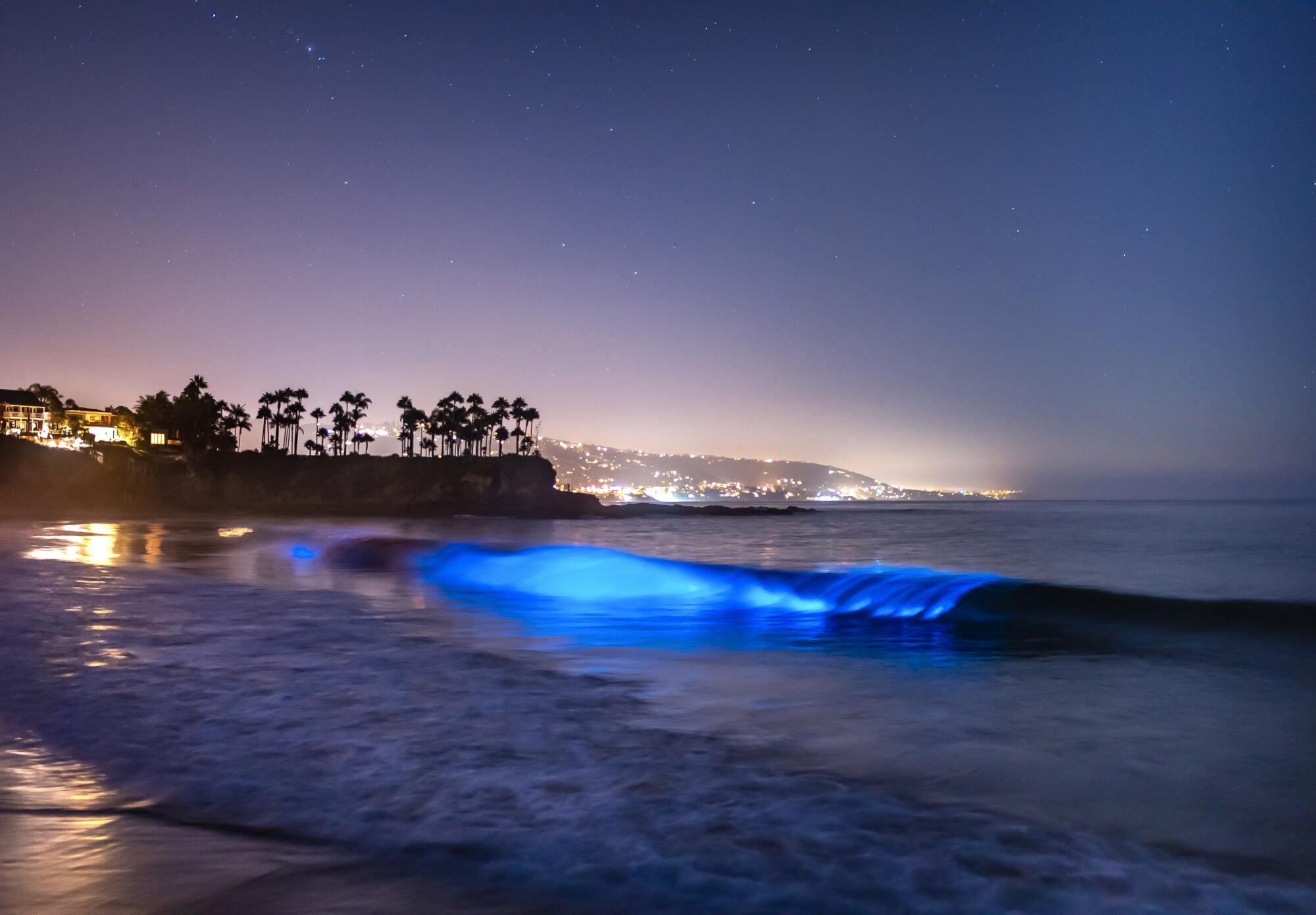
When you’re lucky enough to stumble on bioluminescence, you can run your feet through it, sail a toy boat in it like Coyne has, swim in it (if you’re brave enough to weather the cold) or let your dog run through it. But be aware that some people have reported an allergic reaction of itchy skin or eyes, respiratory sensitivity or even hives after surfing or swimming in the natural phenomenon.
To Coyne, swimming in bioluminescence is magical, but he’s also happy just to see it, especially when Southern California waters are so cold. “It’s like a science-fiction movie when you get the chance to see it in person, and you wonder, ‘Am I actually dreaming?’” Coyne said. “For me, it’s become an addiction so beautiful to see in person that I don’t want to ever stop seeing it — it’s never enough.”
More to Read
Sign up for This Evening's Big Stories
Catch up on the day with the 7 biggest L.A. Times stories in your inbox every weekday evening.
You may occasionally receive promotional content from the Los Angeles Times.
